Over the past fifteen years of helping clients realize their dreams of owning ocean-going yachts, I have witnessed both the joy of successful purchases and the regret stemming from avoidable mistakes. Industry observations indicate that over 60% of first-time boat buyers overlook critical factors, ultimately resulting in financial losses.Below are seven common yacht-buying pitfalls, along with recommendations to help you make more informed decisions when purchasing a yacht in 2025.
Table of Contents:
Price Leak — 2025 Ocean Yacht Value Baseline
Survey Gap — Hidden Moisture & Cat 3196 Bills
Range Lie — Cross-Ocean Fuel Calc Truth
Engine Risk — Hours & Oil Fail Costs
Title Gap — Liens in 30 Seconds
Marina Shock — Hidden Berthing Fees
Invoice Omissions — Dealer Pricing Cycles
Conclusion
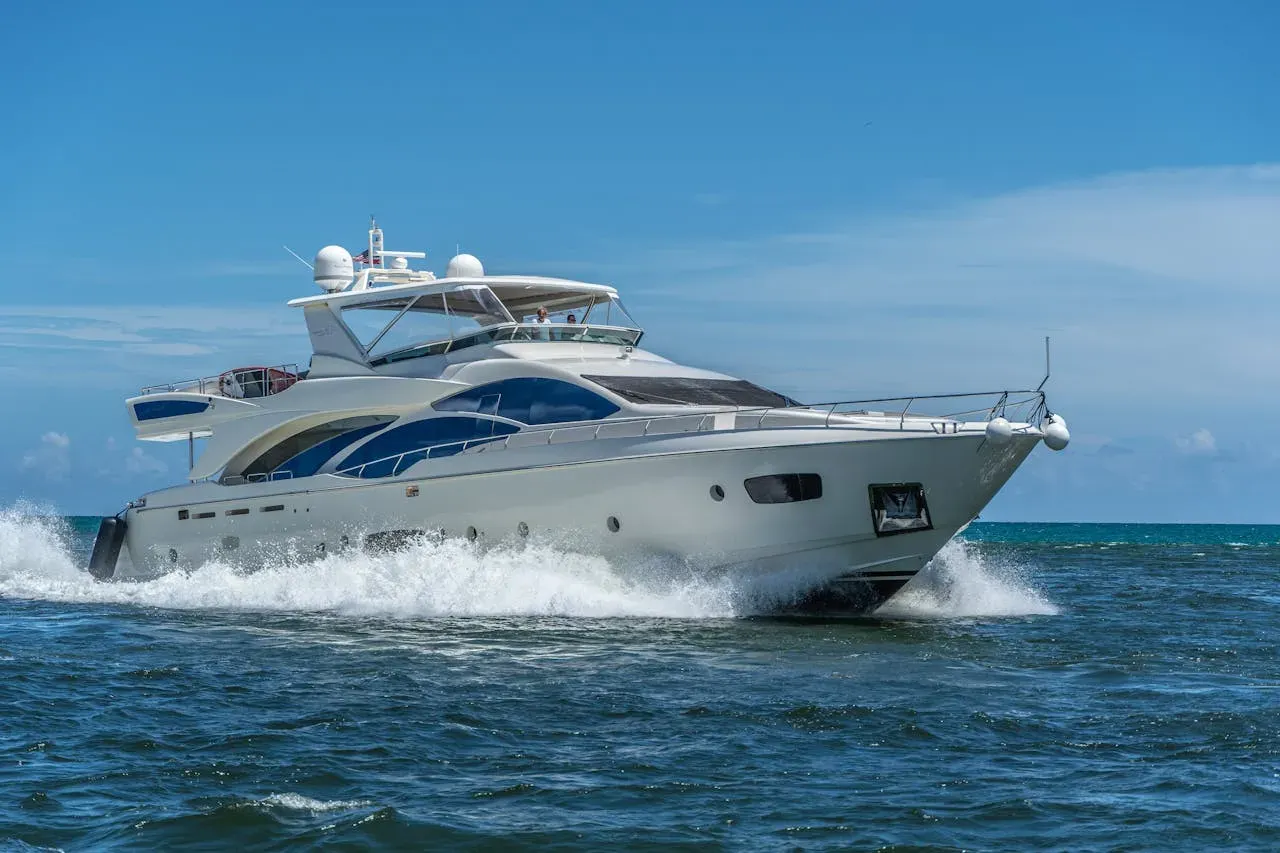
Price Leak — 2025 Ocean Yacht Value Baseline
When receiving yacht quotes, many buyers focus solely on the base price while overlooking additional costs such as freight charges, taxes, insurance premiums, and marina fees. According to WikiHow’s “Boat Budgeting”: “These hidden costs can easily add 15% to 20% to the final price.”
Key Price Components Buyers Overlook
| Cost Component | Typical Range | Why It Matters |
| Delivery Fees | $10,000 - $30,000 | Costs for transporting the yacht to your location can vary widely. |
| Insurance | 1-2% of yacht’s purchase price | Not all buyers account for the cost of comprehensive yacht insurance. |
| Taxes & Registration | 5-15% of the purchase price | Depending on your location, taxes can add a significant amount. |
| Post-Sale Services | $10,000 - $50,000 | Maintenance, warranties, and other services often come with hidden costs. |
How to Avoid This Pitfal?
Request a Detailed Breakdown: Always ask the dealer to provide a comprehensive list of all costs, including delivery, taxes, insurance, and any post-sale services like maintenance or warranties.
Compare Multiple Quotes: Don’t settle for the first offer. Get quotes from at least three dealers, ensuring all costs are clearly outlined.
Budget for Extras: It is recommended to set aside an additional 15–20% of the yacht’s base price to cover potential hidden costs and avoid financial difficulties later on.
Allocating this extra 15–20% budget is just the first step. Start by reviewing the summary of the 5 most common mistakes when buying a pre-owned yacht in 2025. By learning from others’ mistakes beforehand, you’ll be better prepared when negotiating the price.

Survey Gap — Hidden Moisture & Cat 3196 Bills
Many buyers mistakenly believe that a basic survey covers all potential issues, yet hidden moisture damage and engine failures are often overlooked. BoatTrader’s 2025 survey guide states that “wet damage (moisture intrusion) consistently ranks among the most common and expensive defects discovered after purchase.”
What You Can Do?
Moisture Detection: Make sure the surveyor uses a moisture meter to check for hidden moisture in the hull and internal compartments, especially in areas where water accumulation is common. This is critical for identifying potential long-term damage that might not be visible to the naked eye.
Engine Performance Check: Request a compression test to measure the health of the engine’s cylinders. This test can identify early signs of engine wear or potential failure. Also, ask for a cooling system performance test to ensure the engine operates efficiently under load.
Electrical Systems Check: Ask the surveyor to inspect the electrical systems thoroughly, including the batteries, generators, and solar panels (if applicable). A well-functioning electrical system is crucial for smooth and long-lasting yacht operation.
Even with a clean survey report, some issues only show up after the first few outings. If you want to go one step further, we’ve put together a quick checklist on how to avoid buying a problem boat in 2025— worth a skim before you commit.
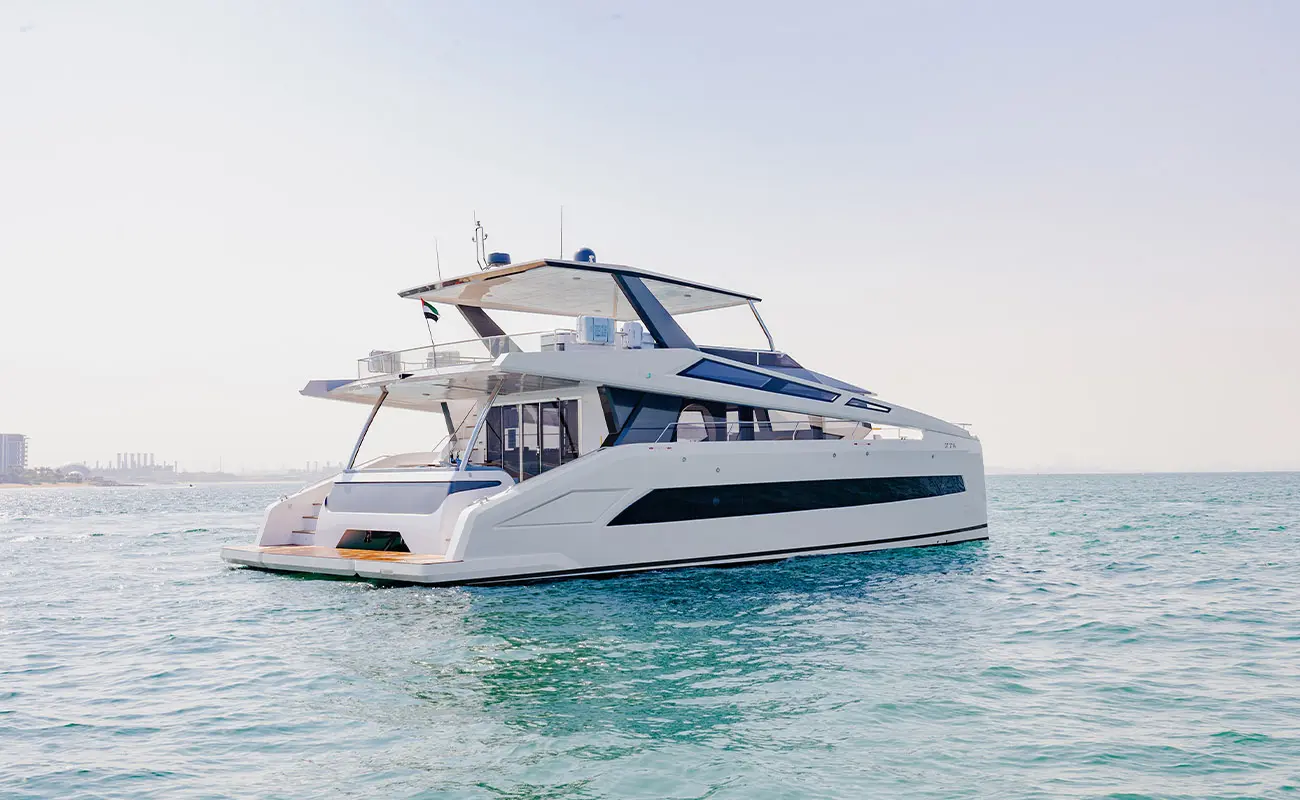
Range Lie — Cross Ocean Fuel Calc Truth
Manufacturers often provide impressive range figures, but these are based on ideal conditions and can be misleading. Sea-Help’s fuel consumption records indicate that “fuel consumption increases by 25% to 40% in sea conditions with waves exceeding 1.5 meters compared to calm seas.” Actual sailing conditions — such as rough seas and variable-speed navigation — significantly impact fuel consumption.
I once worked with a client who bought a yacht advertised with a range of 600 nautical miles, claiming it could cross an ocean on a single tank. However, during its maiden voyage, we found it struggled to reach 500 nautical miles in calm seas. The fuel consumption was much higher than expected, especially in moderate waves. We had to stop for an unscheduled refuel, resulting in additional costs and delays — something we could have avoided by verifying the fuel efficiency beforehand.
How to Ensure Accurate Fuel Data?
Ask for Real-World Data: Seek out user reviews and experiences from other owners who have used the same model in various conditions. Their insights will give you a more realistic understanding of the yacht’s fuel efficiency.
Test Fuel Consumption: If possible, arrange a test trip or trial period to measure the yacht’s fuel consumption firsthand, especially in conditions that match your planned use (e.g., rough seas or high speeds).
Check the Fuel Monitoring System: If the yacht is equipped with a fuel monitoring system, request to see the data logs, which will give you accurate information on fuel consumption over time.
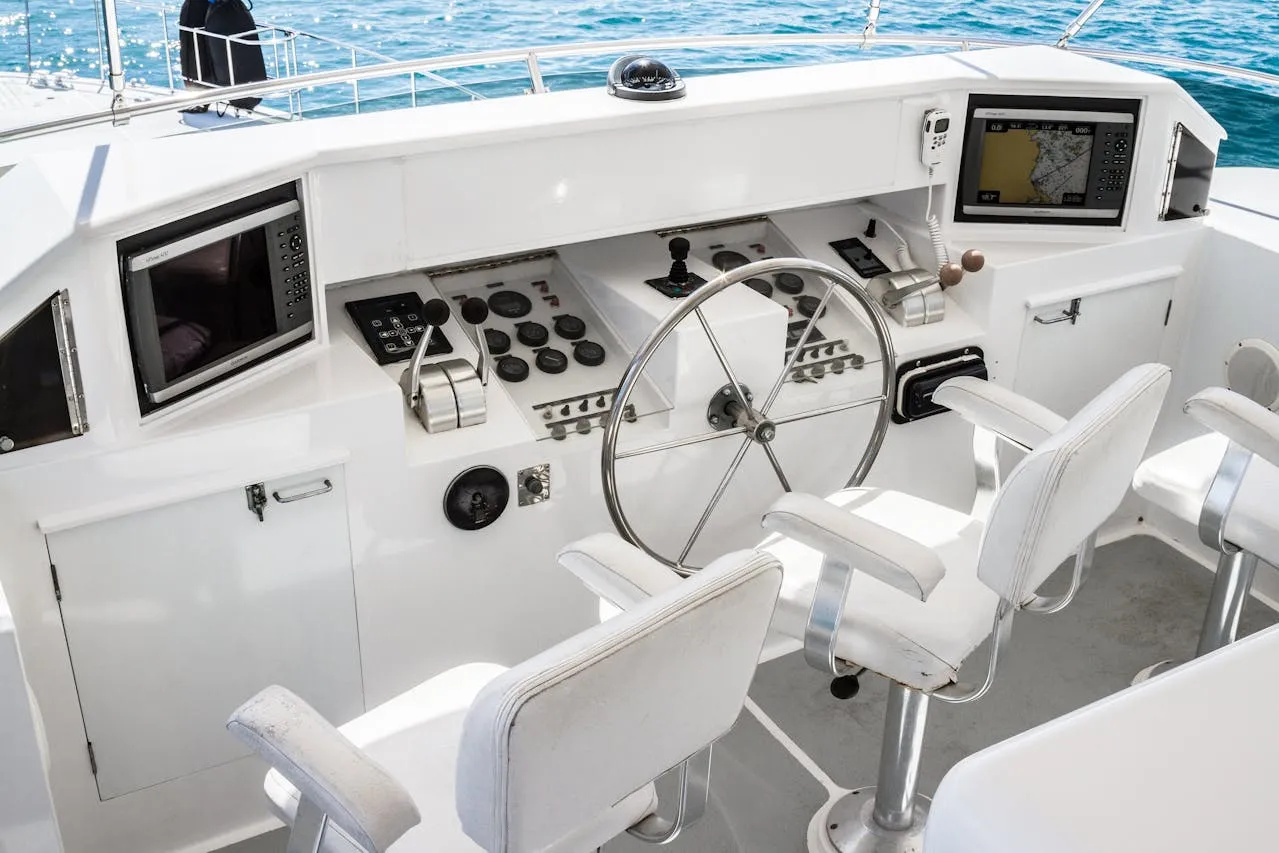
Engine Risk — Hours & Oil Fail Costs
Low engine operating hours do not necessarily indicate well-maintained engines. The 2025 Yachting World report indicates engine health depends more on consistent maintenance than operating hours. Poorly maintained engines, regardless of operating hours, can lead to costly repairs.
Steps to Take
Request Full Maintenance Records: Ask the seller for detailed logs of all maintenance work, including oil changes, filter replacements, and any major repairs. This will tell you whether the yacht has been properly maintained.
Perform a Compression Test: Ensure the engine undergoes a compression test to check the health of each engine cylinder. Low compression can indicate internal engine issues, such as worn valves or pistons, which can lead to expensive repairs.
Check the Cooling System: Make sure the cooling system, including the water pump and radiators, is in good working condition. A well-maintained cooling system is critical for engine longevity.
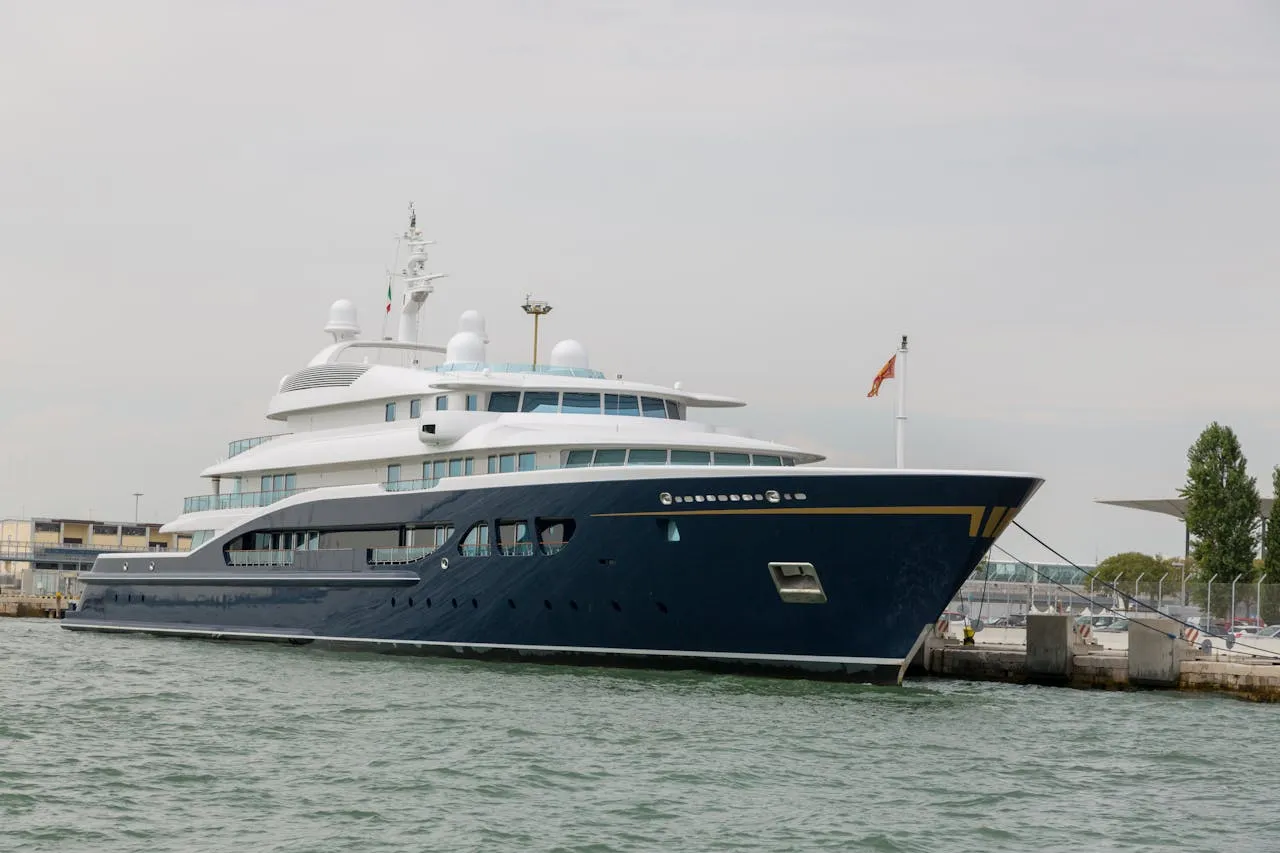
Title Gap — Liens in 30 Seconds
Yacht title issues can trigger major disputes during transactions. Many buyers overlook title verification, ultimately encountering unresolved liens or legal disputes involving the vessel. Superyacht News notes: “Unresolved liens and legal disputes remain one of the most common reasons for post-purchase seizures of top-tier yachts.” Though often neglected, title verification is a critical step in ensuring a smooth transaction.
What You Should Do?
Conduct a Title Search: Before making any payments, conduct a thorough title search through a reputable maritime title registry. This will confirm that there are no existing liens or unresolved financial claims tied to the yacht.
Request Ownership Documents: Ensure that the seller provides all relevant ownership documents and confirm the chain of ownership. This will help ensure that the yacht is legally clear to transfer ownership.

Marina Shock — Hidden Berthing Fees
Yacht marina fees are often an overlooked aspect of yacht ownership. While the yacht’s purchase price commands attention, berthing costs can accumulate into a significant expense. The 2023 Marina Investment report released by Leisure Investment Real Estate Group indicates that annual berth rental growth in high-demand ports across the United States and the Mediterranean region has remained within the 10% to 12% range. This growth trajectory is projected to persist at least through 2026, maintaining a “mid-to-high single-digit” level.
How to Prevent Sticker Shock?
Get a Complete Fee Breakdown: Always ask for a full list of marina-related costs, including docking fees, utilities, and seasonal fee increases. Don’t forget to inquire about long-term contracts or discounts.
Consider Alternative Marinas: If you plan to dock your yacht for an extended period, explore other marina options to see if they offer better rates or services.
Plan for Annual Increases: Account for potential yearly fee hikes and adjust your long-term budget accordingly to ensure you’re not caught off guard.

Invoice Omissions — Dealer Pricing Cycles
Dealers frequently offer promotions and discounts, but these prices fluctuate based on inventory, seasonal demand, or sales cycles. SuperYacht Group advise that while limited-time offers may seem tempting, they can sometimes lead to missing out on more favorable pricing opportunities later.
Here’s How to Maximize Your Purchase
Monitor Pricing Trends: Track price fluctuations over time, especially around seasonal events or sales promotions. Often, prices are lower during off-seasons or when dealers need to clear inventory.
Compare Quotes from Multiple Dealers: Request detailed, itemized invoices from different dealers to ensure you understand the true cost, including all discounts and added services.
Negotiate Terms: Don’t settle for the first offer. Take time to compare offers and negotiate favorable terms, ensuring there are no hidden fees or unspoken conditions in the final agreement.
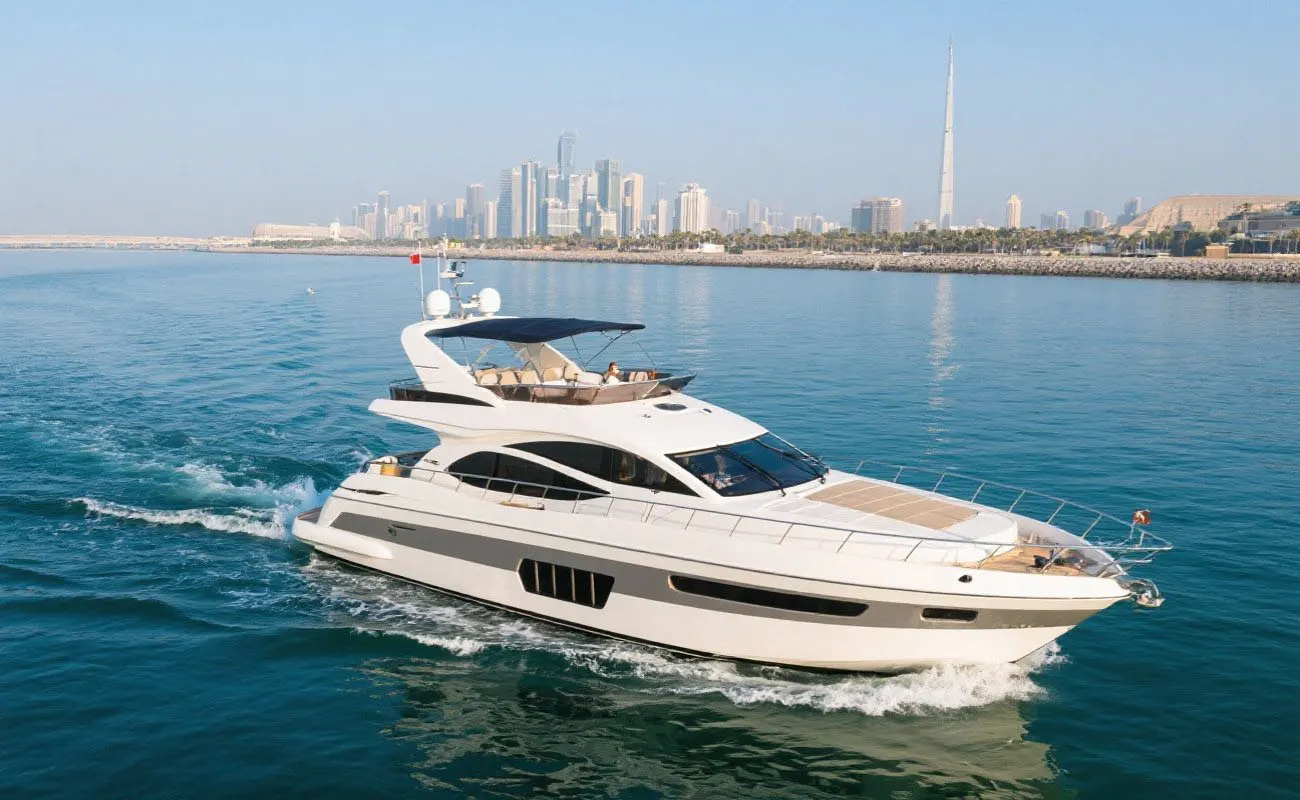
Conclusion
The 2025 ocean-going yacht market holds exciting opportunities, but caution is paramount. Understanding and avoiding these seven costly mistakes will help you make informed purchasing decisions and enjoy the benefits of yacht ownership without worrying about unexpected hassles.
About the Author
John Smith is a certified yacht broker and marine surveyor with 15 years of experience, having appeared on YachtWorld TV and Boat International to decode purchase risk data. As a regular contributor to Ocean Yachting Magazine, he distills NMMA and ICOMIA reports into concise, actionable insights, empowering buyers to make fact-based decisions in 2025 and beyond.
Disclaimer
The information provided herein is for general reference only, based on the author’s 15 years of yacht brokerage experience and publicly available data up to 2025. While we strive for accuracy, prices, regulations, and availability change rapidly; therefore, we do not guarantee the completeness or timeliness of the content. Prior to purchasing a yacht, it is essential to conduct an independent survey, sea trial, and seek professional advice. We assume no liability for any financial or legal decisions made based on the content of this document.